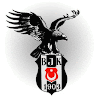
The symbols in the CSC Logo refer to several aspects of superconductivity whose scientific and technological importance is such that most have been recognized with the award of Nobel Prizes in physics.
The relationships are described in the next section. The relevance of the CSC Logo to other developments in superconductivity and superfluidity that are not directly represented in the Logo will also be discussed.
In the last section, all the Nobel Prizes in Physics associated with superconductivity and superfluidity are listed in chronological order, since the developments and the properties of superconductors and superfluids are intimately related.
At the very beginning, Heike Kamerlingh Onnes discovered superconductivity while working on liquid helium. Afterwards, Pyotr Leonidovich Kapitsa discovered superfluidity in 4He. Then, the concept of a ground state with an energy gap composed of even spin particles was developed by Lev Davidovich Landau to describe the properties of superfluid 4He. At the same time, theorists were trying to extend these ideas to odd spin particles or Fermions. By considering phonon interaction of a pair of electrons with opposite spins and with equal and opposite momenta, Cooper was able to postulate pairs of electrons with zero net spin that in a many body formalism could undergo a Bose-Einstein condensation, with an energy gap. When superfluid 3He was discovered, theorists tried to formulate a theory invoking Bose-Einstein condensation of these nuclei with odd spins. They succeeded by considering pairs of nuclei with a net spin of 1 and an angular orbital momentum of 1. Since then, theorists have successfully extended these concepts in attempts to explain the properties of heavy Fermion superconductors.
The list also includes the Meissner effect. Although this effect is a cornerstone of superconductivity, its discoverer did not receive a Nobel Prize.
Finally, it should be noted that the quotations included in the description of the Nobel Prizes given below are taken from the Nobel Prize Announcements, presentations, biographies and Nobel Laureate lectures.
CSC Logo Symbolism
The CSC Logo depicts phenomena associated with three Nobel Prizes in Superconductivity and with the Meissner Effect.
The red arrow on the right represents the persistent electric current resulting from the zero resistance of a superconductor. Heike Kamerlingh Onnes received the Nobel Prize in Physics in 1913 for his studies at liquid helium temperatures which included the discovery of superconductivity.
The four golden horizontal lines symbolize the exclusion of magnetic field lines from the interior of a superconductor. This is known as the Meissner Effect, which was discovered by Fritz Meissner and Robert Ochsenfeld in 1933. It is associated with a perfectly diamagnetic state in a Type I superconductor, and is evidence that superconductivity is a thermodynamic phase independent of the path chosen to reach it.
The two opposing black arrows, one with a yellow dot and the other with a yellow "x" at the center represent electrons with opposite spins but with equal and opposite momenta. These "paired electrons" are known as Cooper pairs. The many body properties of these Cooper pairs led to the development of a microscopic theory of superconductivity by John Bardeen, Leon Cooper and J. Robert Schrieffer, who received the Nobel Prize in Physics in 1972 for their theory, which is commonly known as the "BCS Theory."
The green "X" on the left of the diagram is the symbol for a Josephson tunneling junction in electric circuits. Brian David Josephson received the Nobel Prize in Physics for his theoretical prediction that, under certain conditions, a supercurrent could flow through a tunnel barrier when no voltage is applied.
As mentioned in the introduction, the logo is relevant to other superconducting effects that are not directly illustrated in the Logo. The simplest connection is to single quasi-particle tunneling into a superconductor, discovered by Ivar Giaever (Nobel Prize 1973). If sufficient current is passed through a Josephson junction or a superconducting tunnel junction, a voltage will appear across the tunnel junction and the current vs. voltage curve can be used to measure the superconducting energy gap.
High temperature ceramic oxide superconductors were synthesized in 1986 by J. Georg Bednorz and K. Alexander Müller (Nobel Prize 1987). Superconductivity was confirmed in these oxides when the effects described in the CSC Logo, specifically zero resistance, the Meissner Effect and tunneling of both paired and single quasi particles, were established.
Magnetization curves similar to those found for Type II superconductors, whose magnetization curves are fully diamagnetic up to a lower critical field, Hc1, whereupon magnetic field lines penetrate the superconductor up to an upper critical field, Hc2, where superconductivity disappears, (see 2003 Nobel Prize), but which were irreversible had been obtained for superconducting materials that were inhomogeneous, and therefore, were assumed not to be thermodynamic phases. It was not until Alexei A. Abrikosov developed his theory for Type II superconductors, that the possibility was recognized that these would display reversible magnetization curves that were not fully diamagnetic. Once the reversible character of their magnetization curves was established, Type II superconductors satisfied the principal conditions implied by the CSC Logo. Namely, superconductivity is a reversible thermodynamic phase whose properties do not depend on the path taken to achieve the superconducting state.
Reference:http://www.ewh.ieee.org/tc/csc/logostory.html













0 yorum:
Post a Comment